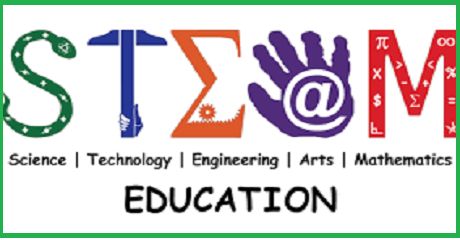The STEAM curriculum, an acronym for Science, Technology, Engineering, Arts, and Mathematics, represents an interdisciplinary and integrated approach to education…
Importance of the STEAM curriculum
The STEAM curriculum, an acronym for Science, Technology, Engineering, Arts, and Mathematics, represents an interdisciplinary and integrated approach to education. It emphasizes the connection between these core disciplines, fostering critical thinking, creativity, and problem-solving skills. Here’s a breakdown of each component in the STEAM curriculum:
Science:
The science component focuses on inquiry-based learning, exploration, and understanding natural phenomena. Students engage in hands-on experiments, observations, and investigations to develop a scientific mindset.
Technology:
Technology in the STEAM curriculum goes beyond using devices. It involves understanding the principles behind technology, learning to code, exploring digital tools, and leveraging technology to solve real-world problems.
Engineering:
The engineering component emphasizes the application of scientific and mathematical principles to design and create solutions. Students learn the engineering design process, which includes problem identification, brainstorming, prototyping, and testing.
Arts:
Arts integration brings creativity and expression into the STEM fields. It includes visual arts, performing arts, and design. Incorporating arts into STEM education encourages innovation, communication, and a holistic approach to problem-solving.
Mathematics:
Mathematics forms the foundation of the STEAM curriculum. It involves applying mathematical concepts to analyze data, solve problems, and make informed decisions. Math is an integral part of scientific and engineering practices.
Key Principles of the STEAM Curriculum:
Interdisciplinary Learning:
STEAM integrates concepts from various disciplines to reflect the interconnected nature of real-world challenges. It promotes a holistic understanding of complex issues.
Project-Based Learning:
Project-based learning is a core aspect of the STEAM curriculum. Students work on hands-on projects, applying theoretical knowledge to solve practical problems, fostering teamwork and critical thinking.
Critical Thinking and Problem-Solving:
STEAM education emphasizes the development of critical thinking skills and the ability to solve complex problems. Students learn to analyze situations, think creatively, and apply knowledge to find innovative solutions.
Creativity and Innovation:
Arts integration encourages creative thinking and expression. It fosters an environment where students feel encouraged to think outside the box, take risks, and explore unconventional solutions.
Real-World Application:
The STEAM curriculum is designed to bridge the gap between the classroom and the real world. Students are encouraged to apply their learning to address authentic challenges, preparing them for future careers in STEM-related fields.
Inquiry-Based Learning:
Inquiry-based learning is a fundamental aspect of the science and engineering components. Students are encouraged to ask questions, explore, and discover answers through hands-on investigations.
Collaboration and Communication:
Collaboration is essential in STEAM education. Students often work in teams, learning to communicate effectively, share ideas, and leverage each other’s strengths to achieve common goals.
Adaptability and Flexibility:
The dynamic nature of STEAM fields requires students to be adaptable and flexible in their approaches to problem-solving. They learn to embrace challenges and view failures as opportunities for growth.
Ethical Considerations:
The STEAM curriculum incorporates ethical considerations, emphasizing the importance of responsible and ethical use of technology, environmental awareness, and social responsibility.
Life-Long Learning:
STEAM education instills a passion for learning and encourages students to view education as a life-long journey. It prepares them for continual learning in an ever-evolving technological landscape.
In summary, the STEAM curriculum represents a comprehensive and innovative educational approach that equips students with the skills and knowledge needed for success in the 21st century. By integrating science, technology, engineering, arts, and mathematics, it fosters a well-rounded education that prepares students to tackle real-world challenges and contribute to a rapidly advancing global society.

Intresting data regarding teaching
Your point of view caught my eye and was very interesting. Thanks. I have a question for you.
Your point of view caught my eye and was very interesting. Thanks. I have a question for you. https://www.binance.com/ro/register?ref=V3MG69RO
Your article helped me a lot, is there any more related content? Thanks!
Thank you for your sharing. I am worried that I lack creative ideas. It is your article that makes me full of hope. Thank you. But, I have a question, can you help me?
Your point of view caught my eye and was very interesting. Thanks. I have a question for you.
Your article helped me a lot, is there any more related content? Thanks! https://accounts.binance.com/vi/register?ref=WTOZ531Y
Can you be more specific about the content of your article? After reading it, I still have some doubts. Hope you can help me.
Way cool, some valid points! I appreciate you making this article available, the rest of the site is also high quality. Have a fun.
Thank you for your sharing. I am worried that I lack creative ideas. It is your article that makes me full of hope. Thank you. But, I have a question, can you help me?
I am genuinely deighted to glance att this weblog posts which carries tons of useful data, thanks
for providing these kinds of information. https://bookofdead34.Wordpress.com
I don’t think the title of your article matches the content lol. Just kidding, mainly because I had some doubts after reading the article. https://www.binance.info/en-IN/register?ref=UM6SMJM3
Can you be more specific about the content of your article? After reading it, I still have some doubts. Hope you can help me.
Свежие xxx-платформы предлагают инновационный
контент для развлечений для взрослых.
Откройте для себя безопасные новые платформы для современного опыта.
Feel free to visit my homepage :: BUY VIAGRA